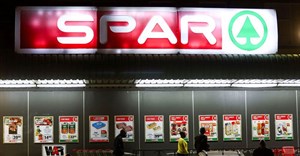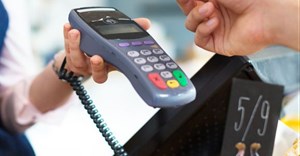
Subscribe & Follow
Key sectors show growth over 2009 figures
Tracking this is an 82% rise in sales of electrical appliances and 73% in supermarket sales. Computers and services related to information technology follow with growth of 50%.
"This is an important indicator because it reveals that companies are investing in new technology to accelerate growth," says Paul Kent, MD of SureSwipe.
The company's bi-annual economic surveys are significant because the company services mostly small and medium enterprises ranging from doctor's consulting rooms to supermarkets. It has a strong focus in underserved, poorer communities, such as Limpopo and Mpumalanga, and more conventional and generally more prosperous areas, such as Gauteng and the Western Cape, so these economic indicators give a much closer look at the economic health of the country than many others do.
Other figures that show positive growth include butchers (23%); food and beverages (32%); hairdressers (20%); healthcare (13%); hobbies and crafts (8%); liquor (16%); pets (6%); retail (20%); spa's and beauty (2%); and wholesalers (5%).
Poor performing sectors
Sectors that are slumping include travel and leisure, which has dropped almost a third since 2009 (after showing appreciable growth around last year's Soccer World Cup), sales of motor vehicles, spares and accessories, 26% down on 2009, which in itself was not a good year for the auto industry.
Another indicator of consumer's caution around unnecessary spending is fashion, which has become a victim of economic woes, spending has dipped 15% since 2009, and so has expenditure on flowers and plants, which is down 13%.
"These figures may show that South Africa is in a better economic position than Europe and the US, which in its most recent stats shows a rise of just 1.3% in consumer spending, a necessary attribute for an economy to grow'" continues Kent.
"Perhaps one of our biggest inhibitors to real growth is our own sense of doom; we need to develop a more positive outlook to push the economy to greater heights and with it, more job creation."
Nielsen confidence results
The latest Nielsen Global Consumer Confidence Survey (on July 21 2011) showed that 'With growing concerns about the economy, job prospects and rising costs, South African consumers lost confidence in the second quarter of 2011 to an index level of 86. Roughly two-thirds (66%) of South African survey respondents said that they believed that their country was in a recession.
'The major concerns for South Africans in Q2 2011 are no different from the previous two quarters: increasing food and fuel prices, rising cost of utility bills, job security, debt, the economy and crime.
'Inflation has been on the rise since the start of the 2010, but while many countries are experiencing skyrocketing prices for basic goods, South Africa has seen some deflation among several staples categories such as rice, corn meal, flour, margarine and tuna. All of this is good news for consumers, who are highly price-driven. Meanwhile, prices for fresh milk, ready-to-eat meals, instant coffee, carbonated soft drinks and sugar all rose. Nonetheless, retailers are increasingly optimistic that volume growth will be promising in 2011.'
Nielsen found that significant spending was going on communications, 'which encompasses cellphones, Internet and cable/satellite TV, almost doubled during the decade, from 11% of spending in 2000 to 21% in 2010.
'Branded retailers, such as Shoprite and Pick n Pay, continued to grow at the expense of smaller, independent retailers, which are also being squeezed by wholesalers. Shoppers at branded outlets not only visit them more, but also spend more per trip. Nonetheless, independent retailers continue to have the highest level of market penetration.
'While most categories saw overall value and volume declines in the first quarter compared to a year ago, one category stood out for growth on both measures: dry groceries. Comparing trends from Q1 2010 to Q1 2011 tells a slightly different story, however, with several categories (toiletries, dry groceries, perishables and household goods) recording solid growth in both value and volume. Key gainers over the past year include ready-to-eat meals, canned pilchards, instant coffee and toilet tissue. Much of the growth was driven from middle income consumers.'
Kent observed, "It is interesting that our figures and those from a US company, Nielsen, show that the economy is doing better than our gloomy perceptions indicate. I believe that despite current global economic turmoil, we can continue to grow faster than the northern hemisphere."
















